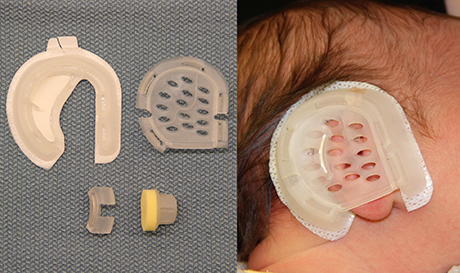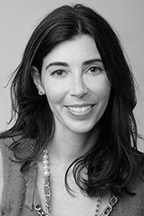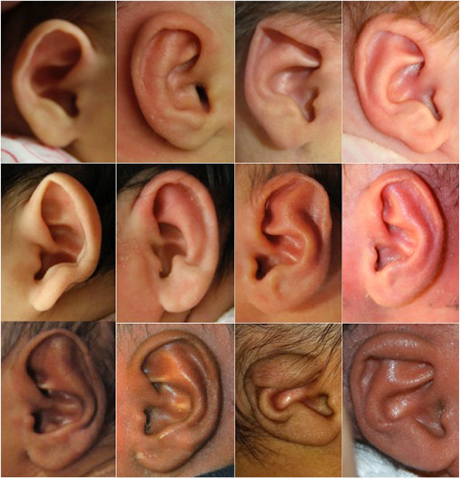Doctors nonsurgically correct infant ear deformities
By Anne Machalinski

A team of researchers from Weill Cornell Medical College and NewYork-Presbyterian/Weill Cornell Medical Center has improved a nonsurgical procedure that safely and effectively corrects newborn ear deformities in just two weeks – a drastically shorter period of time than previously reported.
In their study, published today in the Journal of Plastic and Reconstructive Surgery, the researchers demonstrate how a rigid plastic mold can be used to reshape deformed ears – softening the curves and re-contouring the cartilage – when applied to newborn infants’ ears within the first few weeks of their lives. They also discovered that the pain-free and noninvasive procedure could effectively transform the ear shape in 14 days, compared with the six to eight weeks doctors historically have advised.

“This research represents a breakthrough in how we treat ear deformities,” said lead author Dr. Melissa Doft, a clinical assistant professor of plastic surgery at Weill Cornell Medical College and an assistant attending surgeon at NewYork-Presbyterian/Weill Cornell. “Through innovation, we have an opportunity to truly make a difference in children’s lives, helping to decrease the bullying that many children with ear deformities face and eliminating the need for invasive surgical correction later in life.”
The investigators’ findings are based on the outcomes of procedures that Doft, in collaboration with pediatricians, audiologists and parents, conducted on about 100 newborns (and 158 ears) using the Becon EarWell Infant Ear Correction System between 2010 and 2013 at NewYork-Presbyterian/Weill Cornell. Infants from the newborn nursery were referred directly to Doft in the first few days of their lives, when ears are characterized by greater plasticity. The investigators found that the process was nearly fail-proof, with a 96 percent success rate, and attributed these outcomes to the young age at which they initiated intervention.
Fifteen to 20 percent of all children are born with an ear deformity, which includes constriction, a missing fold, a deep conchal bowl or an obtuse angle. Infants are born with high levels of estrogen in their bloodstreams, which peaks at day three of life. This elevated estrogen increases the ear cartilage’s plasticity, allowing the ear to be molded into the correct position.

Once estrogen levels return to normal – when infants are about six weeks old – using nonsurgical means to fix deformities becomes less reliable, causing infants with ear abnormalities to wait and have ear surgery later in life. Many children have the surgery, called otoplasty, later in their childhood, but there’s a 20 percent chance that the deformity will reoccur if the stiches break. The EarWell’s higher success rate and pain-free process may make it a more attractive option for parents. It also does not impact children’s ability to hear and does not affect a mother’s ability to breastfeed.
“The fact that nonsurgical ear molding is more successful than surgical correction is noteworthy,” Doft said, adding that there are some things – like changes to the soft curves of the ear or certain ridges – that can be much better corrected with molding.
While ear correction typically is cosmetic, early intervention and ear molding with the EarWell often is covered by insurance because it’s considered a congenital deformity. Doft dubbed her research the Newborn Butterfly Project because abnormal ears are coaxed through a natural metamorphosis, similar to how a caterpillar becomes a butterfly.
Study co-authors include Anthony N. LaBruna, Ashutosh Kacker and Jennifer I. DiPace from Weill Cornell Medical College. At the time of the study, co-authors Shawn Diamond was a medical student at Weill Cornell and Alison Goodkind was an undergraduate student at Barnard College.
Anne Machalinski is an editor at Weill Cornell Medical College.
Media Contact
Get Cornell news delivered right to your inbox.
Subscribe